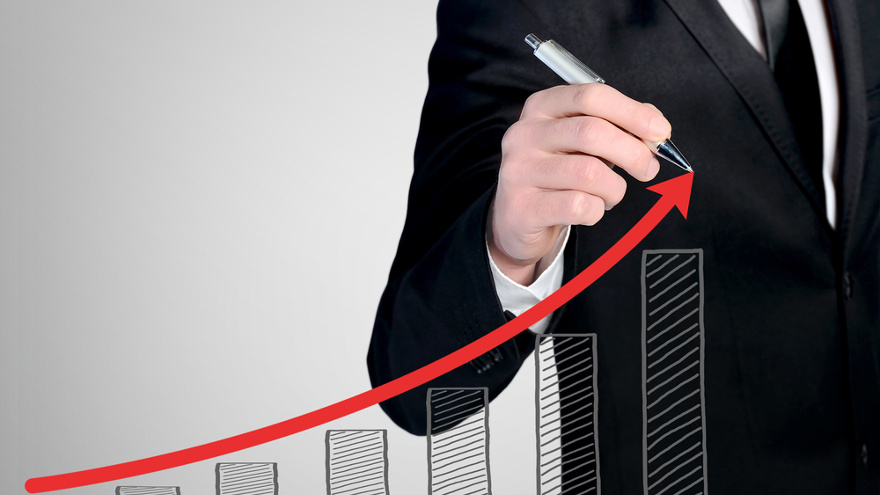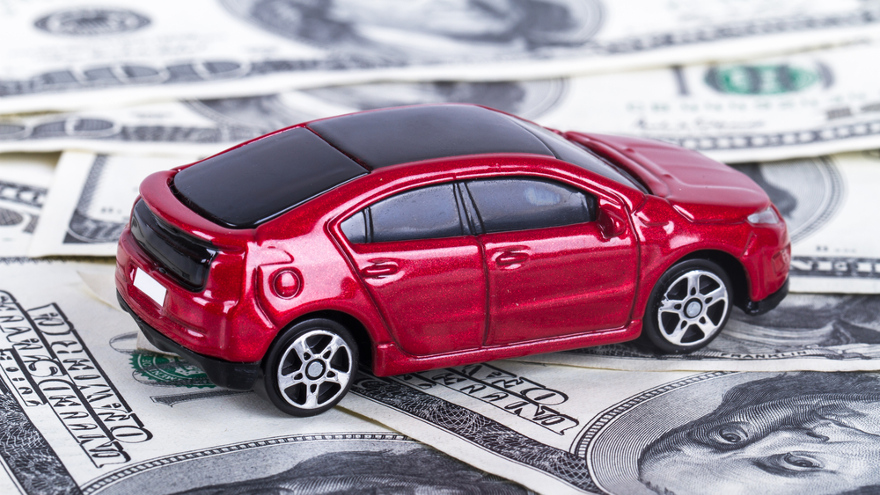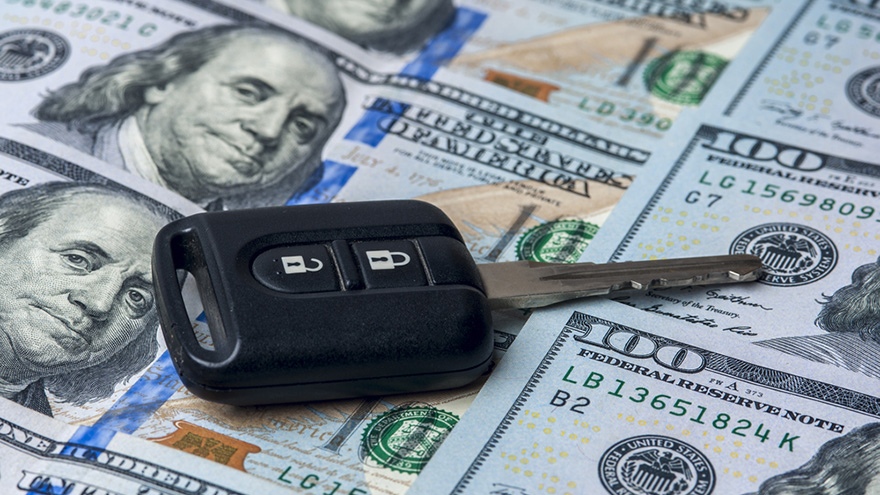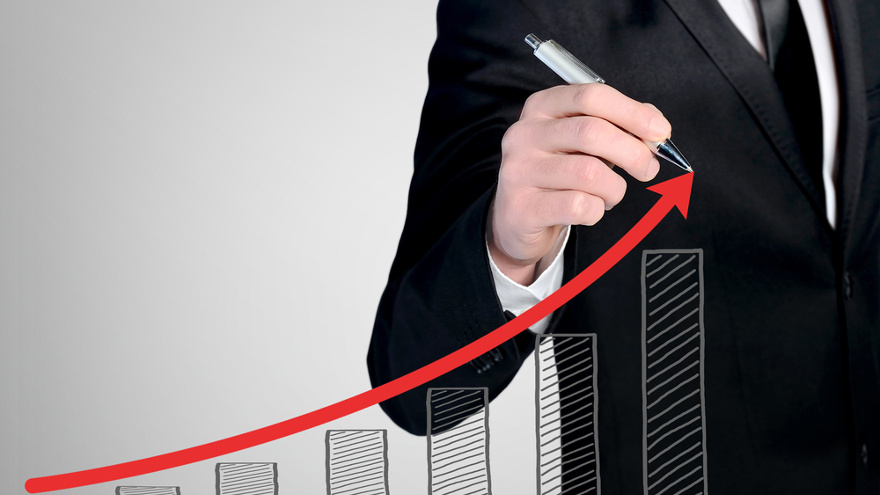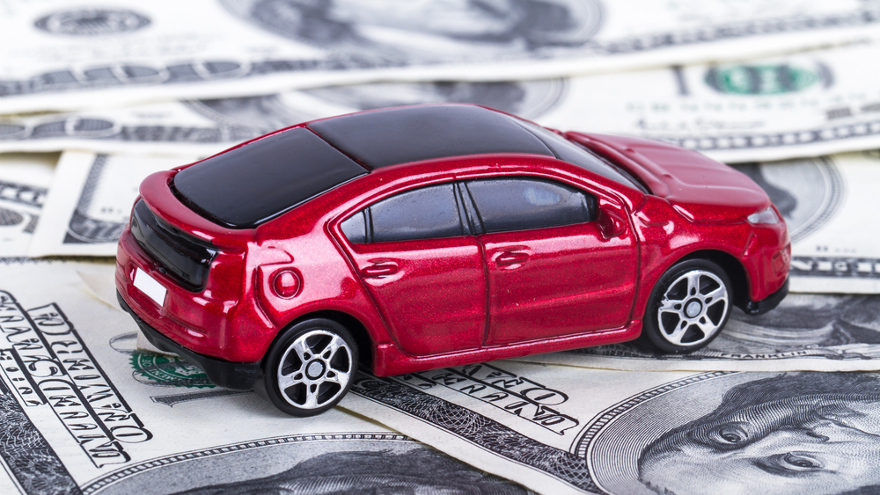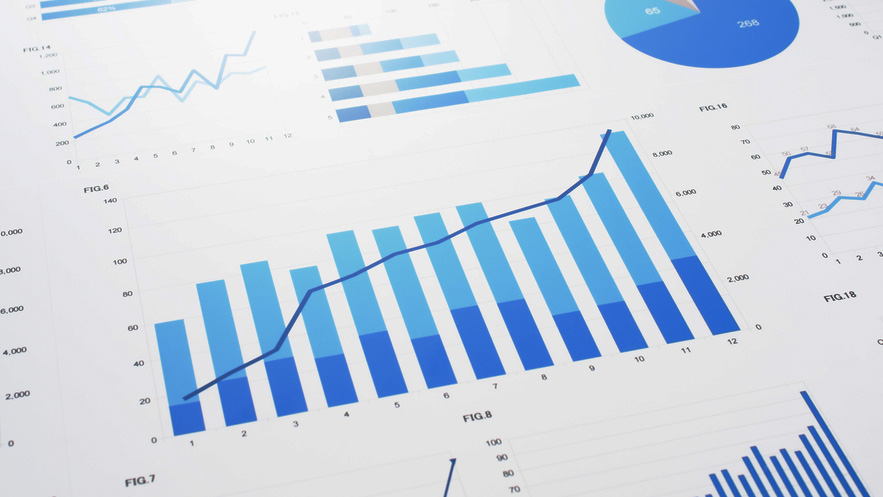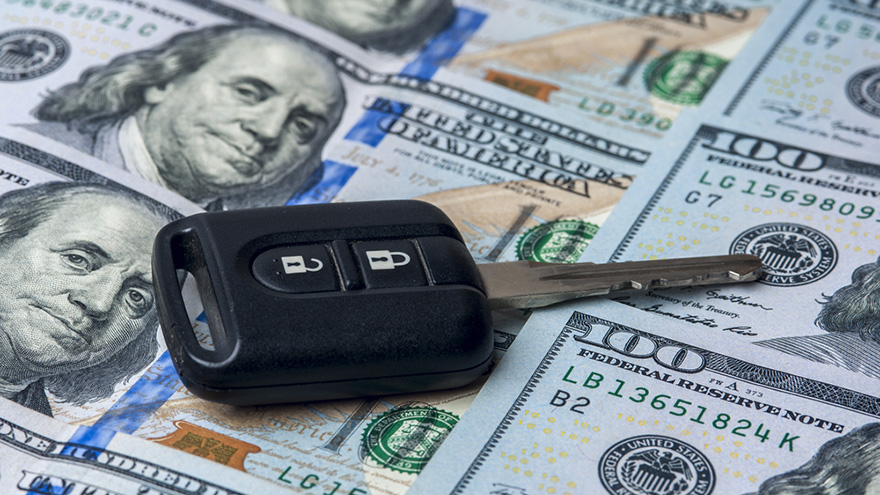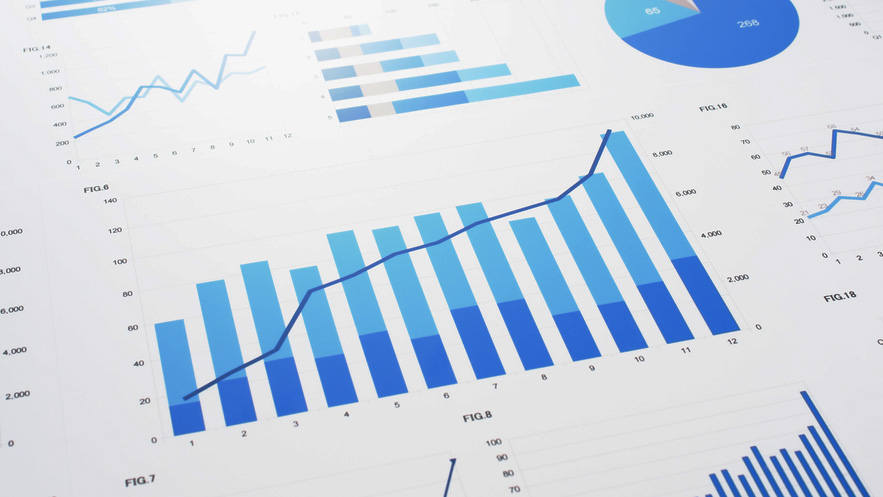Fitch Ratings sifted through data generated by the subprime auto asset backed securities (ABS) market during the first half of the year. Analysts not only found four elements that are supporting the subprime ABS segment, but also more details about why certain vintages might not be performing as well.
First looking into the latest data, Fitch noticed that subprime delinquency rates declined during the second quarter, settling at 4.41 percent through June. That’s an improvement from the reading at the close of the first quarter (5.16 percent) as well as a year earlier (4.55 percent).
Analysts explained the metrics were supported by seasonal patterns and slightly better performance of 2016 and 2017 transactions.
As for annualized net losses in the subprime space, Fitch determined that they came in at 6.76 percent in Q2, down from 8.81 percent at the close of the first quarter and 7.42 percent in the year-ago quarter.
In fact, analysts pegged the latest rate as the lowest recorded since May 2016, “but Fitch expects annualized net losses to rise in the latter half of the year, given seasonal patterns.”
In terms of recovery rates, Fitch tabulated that the reading for subprime paper averaged 49.5 percent for the second quarter, up 13 percent year-over-year and the strongest showing since Q2 of 2016. Analysts pointed out that the latest rates were “markedly stronger” than the first quarter of this year when the recovery rates dipped below 40 percent.
The fourth positive trend Fitch spotted stemmed from improving credit quality.
Analysts said average FICO scores for 2018 subprime pools increased to 588, up 10 points from 577 in 2017, reaching the highest level since 2009.
However, Fitch acknowledged that one component is countering those four pieces of the subprime ABS market — longer terms increasing risk.
“The heavy use of longer loan terms over 60 months by auto lenders is offsetting positive shifts in credit quality,” said analysts, who indicated that that these contracts averaged about 80 percent of subprime pools so far this year, up from approximately 62 percent in 2017.
Fitch closed its latest look at subprime ABS by examining some specific vintages.
Analysts said, “2016-2017 transactions are experiencing high loss rates, but trending lower than 2015 transactions. This is a result of slightly tighter underwriting standards, which have resulted in stronger credit metrics and loan.”
Fitch also mentioned the 2015 vintage is projecting the highest: This vintage (seasoned 30 months) is extrapolating slightly above 15 percent in cumulative net losses, higher than any vintage from 2005-2017, including the prior weakest 20072008 vintages.
“This is driven mostly by the weaker deep subprime ABS issuers not rated by Fitch,” analysts said. “These lenders’ securitized pools have weaker credit metrics and naturally higher losses, thus driving this negative vintage trend.”
S&P Global Ratings recently offered more analysis as to how it examines subprime auto loan asset-backed securities (ABS) issuers in light of what the firm described as an increasingly noticeable trend.
The firm explained that certain U.S. subprime auto loan asset-backed securities (ABS) issuers are reporting more losses later in their transactions' lives than in the past. Because this development is likely due to the longer contract terms and the softer and gentler collection approaches, such as higher extension rates, S&P Global Ratings indicated that analyzing cumulative net losses in the traditional manner (by months outstanding) can sometimes provide an incomplete picture.
In a report published by S&P Global Ratings, titled “Using Pool Factors to Analyze U.S. Subprime Auto Loan ABS Credit Losses,” senior director Amy Martin noted that analyzing loss performance relative to pool factor (the amount of original principal balance remaining in a transaction) affords additional insight into performance, because it captures collateral and collection variations across issuers and over time.
“Issuers’ pools amortize at different rates, given their disparate lending terms and collection practices. We take this phenomenon into account in our rating approach,” Martin said.
“Slower amortization of a pool doesn't in and of itself pose a risk to the transaction as long as losses are within expectations and credit enhancement is adequate to cover tail-end losses,” she continued.
“In our opinion, monitoring losses by pool factor provides a better barometer of performance across issuers (than by month outstanding) because it takes into account the varying rates at which their pools amortize,” Martin went on to say.
“Such analysis can also prove useful when examining performance for an issuer over time, given that the terms of its auto loans or its tolerance for delinquencies and extensions may have changed,” she added.
S&P Global Ratings pointed out this report does not constitute a rating action.
On Thursday, Credit Acceptance Corp. announced the completion of a $398.3 million asset-backed non-recourse secured financing.
Pursuant to this transaction, the subprime auto finance company said it contributed installment contracts of a net book value of approximately $500.1 million to a wholly-owned special purpose entity that will transfer the paper to a trust, which will issue three classes of notes.
The following chart contains more details.
| Note Class |
Amount |
Average Life |
Price |
Interest Rate |
| A |
$235,500,000 |
2.57 years |
99.98166% |
3.55% |
| B |
$80,100,000 |
3.39 years |
99.97726% |
3.89% |
| C |
$82,700,000 |
3.88 years |
99.96582% |
4.04% |
Credit Acceptance highlighted the financing will accomplish three goals, including:
— Have an expected annualized cost of approximately 4.0 percent, including the initial purchaser’s fees and other costs
— Revolve for 24 months, after which it will amortize based upon the cash flows on the contributed contracts
— Be used by the company to repay outstanding indebtedness.
Credit Acceptance indicated that it will receive 6.0 percent of the cash flows related to the underlying consumer contracts to cover servicing expenses. The remaining 94.0 percent, less amounts due to dealers for payments of dealer holdback, will be used to pay principal and interest on the notes as well as the ongoing costs of the financing.
“The financing is structured so as not to affect our contractual relationships with our dealers and to preserve the dealers’ rights to future payments of dealer holdback,” the company said.
The market fundamentals in non-prime are signaling positive. A strong economy and low unemployment are contributing to stabilization in consumer credit scores. Auto defaults are at the lowest point with one full quarter of improvements under the belt.
There continue to be new auto bond issuances, and the spreads on these lowest-rated of these securities are tightening. Competition in the secondary market for non-prime portfolios is high, thanks to the portfolio quality of the underlying assets holding up.
By many measures beyond just these, the non-prime market is showing signs of a change in trend from bear to bull. Whereas private equity (PE) interest was ice cold, things are starting to thaw. Now PE wants back in. But, why now, and why do they want back in?
Let’s take a walk down memory lane
Competition for deals amongst private equity firms for unsecured lending opportunities for the past few years has grown more and more intense. In the prior market cycle just following the Great Recession, Private Equity had excess un-deployed capital that was intended for residential real estate. They pivoted their focus to high-yield, non-prime auto loans.
But, private equity returns in non-prime auto weren’t there. And, the exit wasn’t there either. So, they took their lumps and pivoted again, this time to unsecured assets like financing elective surgery and jewelry purchases. They also pivoted their focus to fintech, placing bets on disruption, and that big banks will adopt this tech. To private equity, fintech offers an exit path more like that of the subprime bureaus, where each major bureau has acquired at least one of these “big data / alternative bureau” providers.
The private equity bets on unsecured, and fintech have been good ones. So, why do they want back in on auto?
This time it will be different
The disruptive nature of fintech is the reason is why. Fintech is completely restructuring how consumers and auto finance companies engage. Fintech has commoditized the application process, the process to evaluate risk, and how customers are serviced. Whereas in the prior market cycle, PE would take equity position in a “soup to nuts” non-prime operations, now they are focusing more on the assets and balance sheet financing. The value of the traditional auto finance company has been morphed from one that has a superior scorecard, or collection process, PE knows that Fintech has largely outsourced and commoditized what were strategic assets. Why build your own custom loan origination or loan servicing system when myriad outsourced options exist? And, why re-invent the wheel? One must look no further than what Uber did to the value of a NY Taxi medallion, and you will see what they are seeing.
The “Amazonification” of financial services businesses is what fintech is all about.
Let’s hear it directly from the source
And who better to hear it from than from the PE folks themselves? Some recent conversations with PE firms and the investment bankers that work directly with them provide us some valuable insight as to why this next cycle will be different. It will be different because of their shift to unsecured options for higher yield (as a suitable replacement to auto), but more importantly due to Fintech disruption. What constitutes itself as an asset of a financial services company is different than just a few years ago. Heck, what comprises what we now call a financial services company is different than a few years back.
Let’s look at the top three themes from these conversations:
1. Balance sheet
PE interest is squarely on the balance sheet and resulting deal structures will continue to show it. Larger PE firms are looking to be a senior secured lender, with capital deployments north of $40 million — directly into collateral.
Loan originators that could use more balance sheet to originate more can benefit from PE investment. And, they can also be effective as a capital bridge to securitizations — as discussed before, a very healthy and stable market.
2. Fintech
Fintech firms trade on a multiple of revenues, while finance companies trade on a multiple of earnings. And, a good fintech solution done right can provide value to small finance companies and big banks, which provides a lot of click revenue. So, this is just a case of investing money into something that will return more money.
Not to be discounted is the actual value of the fintech being created and made available to the non-prime finance community. Take for example a small, regional finance company that just 10 years ago would be operating on spreadsheets and a small IT footprint. That same company can operate in a cost-efficient, cloud-based environment, and utilize AI-based solutions that root out fraud, improve credit selection, drive behavioral scoring — all on subscription or a per-click basis.
3. Confidence in outsourced servicers
Without confidence in outsourced servicers, PE would not be diving back into the non-prime asset class. The market for secondary whole loan trades has been hot and is not cooling down thanks to increasing interest from PE investors. And, that confidence is bolstered by a few key points:
• Outsourced servicers are complex; many are servicers of their own debt that rent out their additional capacity, and the result is a more stable place to park your portfolio
• Outsourced incentives are changing; we are hearing more and more about servicers putting “skin” in the game and taking compensation that is tied to targets shared with the portfolio owner
• What makes an outsourced servicer is less about geography, and more about supplementing specific skill sets, and this is providing cost savings while improving portfolio performance
• Outsourced servicers can deploy technology, training, and analytics in ways that benefit multiple companies in much the same way that Fintech can disrupt
• A more sympathetic Consumer Financial Protection Bureau changes the outlook as well
The PE firms interviewed agreed that their confidence in outsourced servicers is an enabler to giving them the confidence to get more aggressive on deploying their capital into auto assets and knowing that the results will be on target.
The democratization of auto finance
The retail car sales process is not what it used to be. You can find your car online and pick it up from a vending machine. Or, you can use your car as a taxi. Or, you can subscribe to a car service. Or, you can just rent a bike or a scooter. It is no longer about “car ownership.” It’s about mobility. The disruption of the retail car model and the democratization of mobility is in full swing.
The democratization of auto finance is just getting started. And increased PE interest has a track record of begetting more PE interest. Last time around, PE took some lumps along with the finance companies that they invested in. There were no winners. This time around the game board is set up a bit differently. Finance companies will win this time around if they can effectively utilize PE capital in its updated format. Fintech companies will continue to win, as the early cloud-based, and big-data companies already have. Finally, outsourced servicers will win by becoming a more mainstream and standard option that will see increasing demand as more and more PE firms choose to engage them.
Joel Kennedy is a director with Spinnaker Consulting Group. He has a passion for growing and improving auto finance ecosystem. He has more than 23 years of experience helping big banks down to start-up finance companies to build, grow, improve, and repeat. He can be reached at (240) 308-2169 or [email protected].
While improved recoveries in May helped to boost the overall metrics within the U.S. auto loan asset-backed securities (ABS) sector, S&P Global Ratings noticed significant turbulence is developing within the subprime space.
On a static pool vintage basis, S&P Global Ratings discovered subprime cumulative net losses for the 2015 and 2016 cohorts are nearing the recessionary peak levels of 2007 and 2008. And analysts also noticed the 2017 vintage — with only six months of performance — has exceeded those levels.
And S&P Global Ratings also has made its first negative ratings actions within the auto ABS space in seven years.
“In our view, the primary reason for this is the compositional shift of the index,” analysts said.
According to the latest report S&P Global Ratings, the firm explained that its subprime index became more heavily weighted toward deep subprime issuers between 2007 and 2017. Analysts acknowledged these issuers’ pools tend to have three characteristics, including:
— An expected cumulative net loss of 20 percent or more
— Weighted average FICO of the pools tends to be 550 or lower
— Many of the obligors don’t have a credit bureau score.
While the subprime sphere has some sour numbers, S&P Global Ratings pointed out other portions of the ABS market are performing much better, especially since improved recoveries in May contributed to lower losses relative to April and last May.
Analysts indicated prime losses declined to 0.47 percent in May from 0.53 percent in April and 0.60 percent a year earlier, as recoveries increased to 70.44 percent from 65.25 percent in April and 64.31 percent in May of 2017.
S&P Global Ratings reported that prime delinquencies in May held stable month to month at 0.39 percent and were down from 0.45 percent a year earlier.
Meanwhile, analysts determined subprime losses declined to 6.00 percent in May from 6.43 percent in April and 6.98 percent in May of last year also due to higher recoveries, which rose to 48.49 percent from 47.36 percent in April and 42.84 percent last May.
However, S&P Global Ratings mentioned that after a seasonal decline during a three-month stretch, subprime delinquencies in May rose to 4.29 percent from 4.01 percent in April 2018, though they remained below last May’s level of 4.50 percent.
During the first half of this year, S&P Global Ratings said it upgraded 178 classes of U.S. auto loan ABS, downgraded none and affirmed 137.
“We also placed five classes on CreditWatch negative. These are our first negative rating actions for auto loan ABS since 2011,” analysts said.
In some circles, 1990s fashion is back in style nowadays, and S&P Global Ratings is seeing trends within the subprime auto ABS market that resemble the time when Umbro shorts, the discman and tight-rolled pantlegs became popular.
According to a commentary shared with SubPrime Auto Finance News this week, analysts said the current innovation of ‘B’ rated issuances in U.S. subprime auto loan ABS resembles the industry’s first growth phase in the mid-1990s when BB-rated classes were first prevalent.
However, S&P Global Ratings pointed out there is an important difference: The earlier genre of below-investment-grade issuances included more structural safeguards for speculative grade investors.
Analysts recapped that the bulk of the ‘BB’ rated subordinated classes issued in the 1990s were part of securitizations in which the senior notes were bond insured. A few of the earliest ‘BB’ rated classes had a turbo feature, whereby once credit enhancement targets had been achieved and the ‘AAA’ rated bond insured notes had received their monthly distributions, the remaining collections were used to turbo the ‘BB’ rated bonds.
As a result, S&P Global Ratings note that subordination was replaced with overcollateralization, and no funds were released to the sponsor until the ‘BB’ rated note holders were repaid in full.
As ‘BB’ rated notes proliferated and issuers desired releases earlier, analysts said this structural feature was eliminated, but other safeguards remained, including triggers.
S&P Global Ratings pointed out that bond-insured transactions of the 1990s through the Great Recession generally included many triggers, some that were tied to the performance of the underlying collateral and others that were related to the company’s financial position. Analysts acknowledged it wasn’t uncommon for these transactions to include pool-specific delinquency, default and cumulative net loss triggers.
Analysts explained oftentimes the cumulative net loss definition was defined conservatively such that a certain percentage of late stage delinquencies were included in the cumulative net loss calculation. Experts added that company-specific triggers included minimum tangible net worth covenants and bankruptcy of the originator.
“Noncompliance would prevent excess spread from leaving the transaction as it would either be deposited into the reserve account or be used to pay down the notes. Most transactions also included a maximum number of extensions per month, according to S&P Global Ratings.
Given the lack of ‘AAA’ rated bond insurers, analysts noted that bond insurance hasn’t been used as a form of credit enhancement in this market since 2008.
“Their absence as a control party that structured the transactions and the continued maturation of the subprime auto loan ABS market have led to fewer performance triggers in today’s transactions,” S&P Global Ratings said.
“Some argue that pool specific triggers don’t benefit transactions in a high-loss scenario because all of the excess spread is being used to cover losses,” the firm continued. “However, bond-insurance style triggers are generally more effective during periods of mild deterioration, especially if they also include early warning metrics, such as delinquencies and extensions. They prevent funds from being released to the sponsors early in the transactions and increase the overall amount of credit enhancement available to the note holders.
“This is especially the case for issuers that have more back-loaded loss curves, which has become more common as loan terms have lengthened, and delinquencies and extensions have increased,” S&P Global Ratings went on to mention.
“Furthermore, the presence of triggers more closely aligns the interests of the investors with those of the sponsors in that credit performance targets (including passing triggers) much be achieved and maintained in order for the sponsor to receive excess cash flows,” the firm added.
Given the lack of triggers and the growing popularity of ‘B’ rated classes in subprime auto loan ABS, analysts suspected the market is bearing similarities to the speculative corporate bond market where covenant-lite structures are abounding.
Through early February, S&P Global Ratings reported that covenant-light deals accounted for record high 85 percent of 'B' rated institutional issuance.
“The low-interest-rate environment and low default history has resulted in an increasingly borrower-friendly leveraged finance condition as investors seek higher yield,” analysts said.
S&P Global Ratings closed by noting that issuing deeply subordinated, speculative-grade classes has increased subprime auto loan ABS sponsors' all-in ABS advance rates. At the same time, it has been accompanied with weaker protections for these investors during the next economic or business downturn.
“The speculative grade classes are highly dependent upon overcollateralization and excess spread and stand to benefit the most from triggers,” analysts said. “The investment grade tranches, however, continue to benefit from the typical deleveraging in auto loan ABS due to subordination growing as a percentage of the outstanding collateral.
“As a result, we expect investment grade ratings for subprime auto loan ABS to remain generally stable to positive,” they continued. “As speculative grade classes continue to gain popularity though, especially single-‘B’ rated classes, we would expect greater rating volatility than in the past.”
It’s been a predictable spring for the U.S. auto loan asset-backed securities (ABS) market, and S&P Global Ratings said that’s been a good thing.
It was so good, in fact, that one subprime-specific metric made a positive move for the first time in six months.
According to the firm’s latest report, S&P Global Ratings highlighted the prime and subprime sectors continued to benefit from seasonal factors in April. Analysts indicated improvement was reflected in losses declining on a month-over-month basis, “which is a common trend each spring.”
Additionally, S&P Global Ratings pointed out delinquencies for the prime sector remained stable and improved for the subprime sector.
The report mentioned prime and subprime month-over-month losses narrowed to 0.54 percent and 6.43 percent in April from 0.68 percent and 7.62 percent in March, respectively, and year-over-year, from 0.61 percent and 7.04 percent, respectively.
Analysts highlighted this movement is the first time that subprime losses have declined year-over-year since November.
S&P Global Ratings found that the prime recovery rate increased month-over-month to 65.69 percent in April from 58.74 percent in March and year-over-year from 62.17 percent in April 2017.
Subprime recoveries were stable month over month at 47.37 percent in April compared to 47.46 percent in March, and rose from 44.73 percent in April of last year.
“In our opinion, this spring rebound in recoveries contributed to the decline in year-over-year losses,” analysts said.
The report went on to state the prime sector 60-plus-day delinquency rate remained relatively stable at 0.40 percent in April compared to 0.38 percent in March and 0.42 percent in April of last year.
The subprime sector 60-plus-day delinquency rate fell to 4.01 percent in April from 4.28 percent in March and 4.25 percent in April 2017.
S&P Global Ratings closed by noting the firm in May revised expected cumulative loss range for several participants, including some with subprime exposure:
— CarNow Auto Receivables Trust 2016-1
— CarFinance Capital Auto Trust 2013-3
— World Omni Auto Receivables Trust 2016-B
— Westlake Automobile Receivables Trust
— TCF Auto Receivables Owner Trust
— Flagship Credit Auto Trust
— CPS Auto Receivables Trust
— DT Auto Owner Trust
Global Lending Services, Credit Acceptance and Consumer Portfolio Services all have been active in the securitization space during the past 60 days; moves by the subprime auto finance companies that involved more than $1.1 billion in value.
The most recent move arrived this week as Kroll Bond Rating Agency (KBRA) assigned preliminary ratings to four classes of notes issued by Global Lending Services via GLS Auto Receivables Issuer Trust 2018-2, an auto loan ABS transaction.
GLS Auto Receivables Issuer Trust 2018-2 issued four classes of notes totaling $299.39 million. The notes are backed by a pledge of assets from Global Lending Services and the underlying trust, the assets will include a certificate representing the entire beneficial ownership in the underlying trust.
KBRA indicated the assets of the underlying trust will include a pool of fixed rate retail automobile contracts, made to subprime obligors, who generally have a credit bureau score ranging from 470 to 620, secured by new and used vehicles.
The agency explained the preliminary ratings reflect the initial credit enhancement levels ranging from 47.00 percent for the Class A notes to 9.50 percent for the Class D notes, which build to 58.50 percent and 21.00 percent for the Class A and Class D notes, respectively, over time.
“Credit enhancement is comprised of overcollateralization, subordination of junior note classes, a cash reserve account and excess spread,” analyst said.
This transaction represents Global Lending Services’ second term ABS securitization of the year and sixth overall. GLS’s inaugural securitization was a private, unrated term securitization that closed in 2014.
GLS is a subprime auto finance company that was founded in October 2011 and is backed by its founder Doug Duncan and BlueMountain Capital Management.
“GLS benefits from a capable management team that has extensive experience in the auto finance industry,” KBRA said.
KBRA applied its Global Auto Loan ABS methodology as part of its analysis of the transaction’s underlying collateral pool, the proposed capital structure and GLS’s historical static pool data.
KBRA also conducted an operational assessment on the originator and servicer, as well as a review of the transaction’s legal structure and transaction documents. KBRA added that it will also review the operative agreements and legal opinions for the transaction prior to closing.
Preliminary Ratings Assigned: GLS Auto Receivables Issuer Trust 2018-2
| Class |
Preliminary Rating |
Principal Balance |
| A |
AA (sf) |
$176,690,000 |
| B |
A (sf) |
$52,840,000 |
| C |
BBB (sf) |
$39,590,000 |
| D |
BB- (sf) |
$30,270,000 |
Source: Kroll Bond Rating Agency
Credit Acceptance actions
Just before Memorial Day, Credit Acceptance announced the completion of a $450.0 million asset-backed non-recourse secured financing.
Pursuant to this transaction, the company contributed contracts having a net book value of approximately $562.6 million to a wholly-owned special purpose entity, which will transfer the contracts to a trust, which will issue three classes of notes:
| Note Class |
Amount |
Average Life |
Price |
Interest Rate |
| A |
$281,200,000 |
2.58 years |
99.98113% |
3.47% |
| B |
$92,500,000 |
3.44 years |
99.98268% |
3.94% |
| C |
$76,300,000 |
3.85 years |
99.98342% |
4.16% |
Source: Credit Acceptance
Credit Acceptance explained the financing will accomplish three objectives, including:
— Have an expected annualized cost of approximately 4.0 percent including the initial purchaser’s fees and other costs.
— Revolve for 24 months after which it will amortize based upon the cash flows on the contributed contracts.
— Be used by the company to repay outstanding indebtedness.
Credit Acceptance said it will receive 6.0 percent of the cash flows related to the underlying consumer contracts to cover servicing expenses. The remaining 94.0 percent, less amounts due to dealers for payments of dealer holdback, will be used to pay principal and interest on the notes as well as the ongoing costs of the financing.
“The financing is structured so as not to affect our contractual relationships with our dealers and to preserve the dealers’ rights to future payments of dealer holdback,” Credit Acceptance said.
Developments at CPS
And about the time of the release of its first-quarter financial statement, Consumer Portfolio Services announced the closing of its second term securitization in 2018.
The transaction is CPS’ 28th senior subordinate securitization since the beginning of 2011 and the eleventh consecutive securitization to receive a triple “A” rating on the senior class of notes from at least two rating agencies.
In the transaction, CPS highlighted qualified institutional buyers purchased $201.8 million of asset-backed notes secured by $205.0 million in automobile receivables originated by CPS.
The sold notes, issued by CPS Auto Receivables Trust 2018-B, consist of five classes.
Officials pointed out ratings of the notes were provided by Standard & Poor’s and Kroll Bond Rating Agency, and were based on the structure of the transaction, the historical performance of similar receivables and CPS’ experience as a servicer.
| Note Class |
Amount |
Interest Rate |
Average Life |
Price |
S&P Rating |
KBRA Rating |
| A |
$93.7 million |
2.72% |
79 years |
99.99577% |
AAA |
AAA |
| B |
$33.0 million |
3.23% |
1.99 years |
99.99587% |
AA |
AA |
| C |
$28.1 million |
3.58% |
2.66 years |
99.98204% |
A |
A |
| D |
$24.7 million |
4.26% |
3.44 years |
99.49656% |
BBB |
BBB |
| E |
$22.3 million |
5.61% |
4.12 years |
99.43146% |
BB- |
BB- |
Source: Consumer Portfolio Services
CPS said the weighted average coupon on the notes is approximately 3.98 percent.
The company also explained the 2018-B transaction has initial credit enhancement consisting of a cash deposit equal to 1.00 percent of the original receivable pool balance and over-collateralization of 1.55 percent.
CPS added the final enhancement level requires accelerated payment of principal on the notes to reach overcollateralization of the lesser of 5.50 percent of the original receivable pool balance, or 18.50 percent of the then outstanding pool balance.
Then in a later, separate development, CPS also announced the closing of a financing backed by its residual interests in 17 previously issued securitizations.
In the transaction, the company said a qualified institutional buyer purchased $40.0 million of asset-backed notes secured by residual interests in 13 CPS securitizations issued consecutively from September 2013 through December 2016 and by an 80 percent interest in a CPS affiliate that owns the residual interests in four CPS securitizations issued in 2017.
Officials indicated the single class of notes was rated BB (low) by DBRS and bears interest at an annual rate of 8.595 percent.
CPS explained interest will be paid on the notes monthly and principal payments will be made to the extent necessary to maintain a ratio of collateral to the outstanding notes at a specified level.
For purposes of this financing, the company acknowledged the collateral consists of the spread account balances and the over-collateralization of the pledged securitizations. In the case of the 2017 securitizations, CPS added that only 80 percent of the spread account balances and over-collateralization are included in the collateral.
A new Fitch Ratings report shared results of internally conducted stress tests that likely won’t please recovery managers, but these findings nevertheless cannot be ignored by any finance company, regardless of size.
Fitch explained that falling used-vehicle values and swelling supply are set to continue at least through next year, which will lead to worsening recoveries and heightened performance pressures for both auto loan and lease ABS.
Losses have been slowly trending higher since 2016, though, “The prospect of higher defaults becomes more tangible if increased competition, a decline in sales and looser underwriting standards converge,” Fitch director Margaret Rowe said.
“Incentives and original equipment manufacturer spending is also up in each of last three years and may further weaken used vehicle values, which will make managing vehicle production levels more critical over the next two years,” Rowe continued.
The intensifying wholesale market pressures will not be enough to dent Fitch’s rating outlook for auto ABS, which remains positive for this year thanks to growing credit enhancement levels, swift amortization and Fitch's through-the-cycle loss proxy approach.
Auto lease securitizations are further protected by including more conservative securitization mark-to-market Automotive Lease Guide (ALG) residual values. Fitch expects upgrades on subordinate note tranches to continue in 2018, particularly for more seasoned transactions.
Nonetheless, Fitch stress-tested its rated auto ABS with two separate hypothetical scenarios to examine potential rating implications if used vehicles fall more precipitously and supply continues to swell.
Under Fitch’s “moderate” scenario (a roughly 20 percent trimming to recoveries), analysts determined there would be no rating deterioration for both loan and lease ABS.
Under the “severe” stress scenario (a 50-percent reduction), however, analysts indicated subprime auto loan ABS could see one- to two-notch downgrades for their subordinate tranches. Analysts added high investment-grade ratings in both asset classes would see little to no impact and remain stable under this scenario.
“Subprime subordinate tranches show greater potential for multiple compression and downgrades given their reliance on excess spread,” Rowe said. “That said, downgrades would likely be concentrated to the most junior subordinated notes of a subprime deal in the most severe scenario.”
The report titled, "Supply & Severity: Will Swelling Used Vehicle Supply Impact Auto ABS Ratings?" is available at www.fitchratings.com.
Along with some noteworthy developments about how finance companies are striving to improve the quality of paper flowing into their portfolios, the latest monthly U.S. Auto Loan ABS tracker from S&P Global Ratings contains other elements that should delight industry observers and participants.
Perhaps most notably, the analyst team at S&P Global Rating began its report by highlighting how bolstered collateral performance arrived because of “normal seasonal behavior.” S&P Global Ratings based its assessment of the U.S. auto loan asset-backed securities (ABS) market as of March.
“As tax refunds came in, consumers brought their credit obligations current and drove demand for used vehicles,” analysts said in the report shared this week with SubPrime Auto Finance News. The seasonal phenomenon caused delinquencies to decrease and recoveries to improve month-over-month. Subprime net losses also declined substantially month-over-month.
“On a year-over-year basis, the prime sector reported near stability in losses and delinquencies but recoveries weakened. Meanwhile, the subprime segment demonstrated weaker performance year-over-year with respect to net loss and delinquency performance,” they added.
Delving deeper into the numbers, S&P Global Ratings indicated that prime net losses were almost flat at 0.68 percent in March compared to 0.69 percent in February and were nearly stable relative to a year earlier at 0.65 percent.
As referenced earlier, analysts reiterated the subprime net loss rate improved “significantly” month-over-month, decreasing to 7.62 percent in March from 9.18 percent in February. However, subprime losses climbed on a year-over-year basis from 7.37 percent in March 2017.
As a supplement to its subprime index, S&P Global Ratings created the modified subprime index, which excludes certain high-loss deep subprime issuers including Santander Drive Auto Receivables Trust (DRIVE), American Credit Acceptance Receivables (ACA) and Exeter Automobile Receivables Trust (Exeter).
On a month-over-month basis, the report showed the modified subprime loss rate decreased to 6.37 percent in March from 7.24 percent in February and increased from 6.16 percent in March 2017.
“Auto losses typically decline during the end of the first quarter, largely because of seasonal factors,” analysts said. “Late payments and losses tend to peak at year's end due to holiday shopping and then decrease during tax season as refunds support consumers’ ability to bring their credit obligations current.”
When it came to recoveries, S&P Global Ratings spotting seasonal pattern there, too, resulting in improvements.
The prime recovery rate increased month-over-month to 58.74 percent in March from 53.91 percent in February. Analysts also noticed subprime recoveries picked up month-over-month, increasing to 47.45 percent in March from 39.21 percent in February.
“As expected, tax refunds led to increased demand for used vehicles and supported the month-over-month improvement in recoveries,” S&P Global Ratings said in the report. “Of note was the subprime modified composite, which excludes the three large deep subprime lenders, reporting lower recoveries (46.59 percent) than the overall subprime composite (47.45 percent), which includes these deep subprime lenders.”
Analysts went on to explain that normally these higher-loss issuers garner lower recovery rates than their lower-loss peers. However, Santander’s DRIVE platform experienced “exceptionally strong recoveries” in March with an average recovery rate of 53.90 percent across its outstanding issuances.
Looking on a year-over-year basis, S&P Global Ratings shared that prime recoveries remained lower, decreasing from 63.42 percent in March of last year.
Modified subprime recoveries decreased year-over-year, as well, to 46.59 percent.
Subprime recoveries including the deep subprime finance companies ticked up slightly from 47.30 percent in March 2017, due to strong recoveries on the DRIVE transactions.
Turning next to delinquencies, the seasonal theme continued, according to the report.
The prime 60-plus-day delinquency rate declined to 0.38 percent in March from 0.46 percent in February 2018, while remaining relatively stable year-over-year since the reading in March 2017 was 0.40 percent.
The subprime 60-plus-day delinquency rate improved to 4.28 percent in March from 5.15 percent in February. Looking on a year-over-year basis the metric still edged slightly higher from 4.04 percent in March 2017.
Analysts added the modified subprime 60-plus-day delinquency rate improved 77 basis points to 3.18 percent in March from 3.95 percent in February, but deteriorated by 15 basis points year-over-year from 3.03 percent in March 2017.
Finally, S&P Global Ratings closed its latest report by highlighting how much FICO scores have improved in connection with auto paper now in the market.
Analysts determined the weighted average FICO for prime transactions issued in the first quarter reached an all-time high of 757, up from 744 in Q1 2017 and 748 for the full year.
“In aggregate, subprime lenders appear keenly focused on maintaining improvements they’ve made in credit quality that began in 2016,” analysts said.
On the subprime side, S&P Global Ratings found that the weighted average FICO improved to 586 in Q1 — the highest reading since 2009. In Q1 of last year, it stood at 575 and 578 in all of 2017.
Also, the weighted average LTV remained nearly stable at 110.71 percent compared with 110.43 percent a year earlier and 110.57 percent for full-year 2017. S&P Global Ratings pointed out the reading remained significantly lower than their post-credit-crisis peak of 114.78 percent in 2014.
At the same time, the report mentioned the weighted average loan-to-value (LTV) ratio declined to 95.69 percent from 97.16 percent in Q1 2017 and 96.14 percent for all of 2017.
S&P Global Ratings acknowledged its metrics were “somewhat” affected by AmeriCredit, which did not issue in Q1 due to a planned servicing system upgrade.
Had it issued AmeriCredit Automobiles Receivables Trust 2018-1 in first quarter rather than May, the weighted average FICO and LTV would have been 585 and 110.03 percent, respectively, according to the report.


